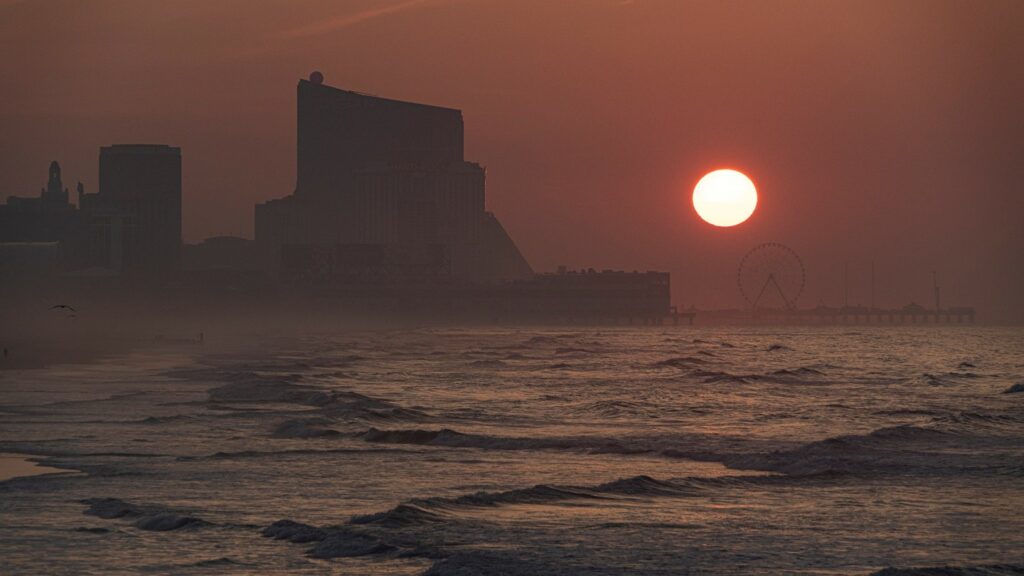
STEVE JASIECKI/Thick haze obscures the sun as it rises over Atlantic City indicating a scorching day ahead.
Submitted by STEVE JASIECKI
It’s common knowledge that cities are hotter than the surrounding countryside. That’s because buildings, roads and other structures absorb the sun’s radiation and reflect the heat in higher concentrations. Add to that automobiles, heat generating equipment and the reduction of air flow due to the close proximity of buildings and you will get quite a stifling city.
This island of heat in cities is known as the “Urban Heat Island Effect” and can raise temperatures several degrees higher than their rural counterparts.
High temperature days are stressful, but the additional heat contributed by the heat island effect creates higher operating costs for families and city government. Just a 2-degree increase in temperature can increase the demand for electricity as much as 9%.
Extreme high temperatures can buckle roads, scorch landscaping and cause other infrastructure damage. Time delays, rerouting traffic and structural repairs can end up costing a city millions of dollars. Heat related illness, such as heat exhaustion and heat stroke, are more likely to increase, particularly among the elderly and children. Respiratory illnesses also rise because of increased air pollution from the demand for energy.
Cities have been taking steps to lower the risk of extreme heat periods. Warning systems alert people of an upcoming heat risk while cooling centers offer relief for those who do not have air conditioning. Nevertheless, structural changes are needed to reduce the heat.
The heat island effect has caused planners and developers to rethink the conventional trends used for development. They have developed strategies to reduce heat buildup and increase air circulation. Many of these plans incorporate nature into urban settings.
Here is a sampling of some of the strategies being undertaken in cities:
- Increasing the city tree canopy and adding greenery. Trees shade sidewalks and streets and some cities replace concrete and asphalt with vegetation where applicable.
- Enforce idling ordinances. Drivers who leave their cars running are not only generating heat, but they also leave pedestrians who may be sitting nearby breathing car exhaust.
- Adding shade structures. Awnings, canvas and creative structure designs are being used to shade streets, alleys and sidewalks.
- Installing Green Roofs. A roof that is made up or partially covered with vegetation absorbs the sun’s radiation. Chicago has more green roofs than any other US city.
- Cool roofs. Materials and coatings that reflect sunlight and heat from the buildings are used to reduce roof temperatures.
- Cool Pavements. Porous paving materials on sidewalks and parking lots that reflect the heat rather the retain it. This type of pavement has the additional benefit of allowing water to penetrate into the ground, helping to alleviate flooding.
- Painting roofs white. White roofs reflect light, keeping buildings cooler.
- Smart Growth. Designing buildings and properties with greater air flow and incorporating the natural environment as part of the design. This concept is known as biophilic design.
We can help by using less energy. We can plant more trees and add more landscaping. We can drive less and shut off the engine when running into a store. These may seem like small steps, but collectively they have a huge effect on a city.
For a more detailed look into the heat island effect, see Reducing Urban Heat Islands: Compendium of Strategies at https://www.epa.gov/sites/default/files/2017-05/documents/reducing_urban_heat_islands_ch_6.pdf


